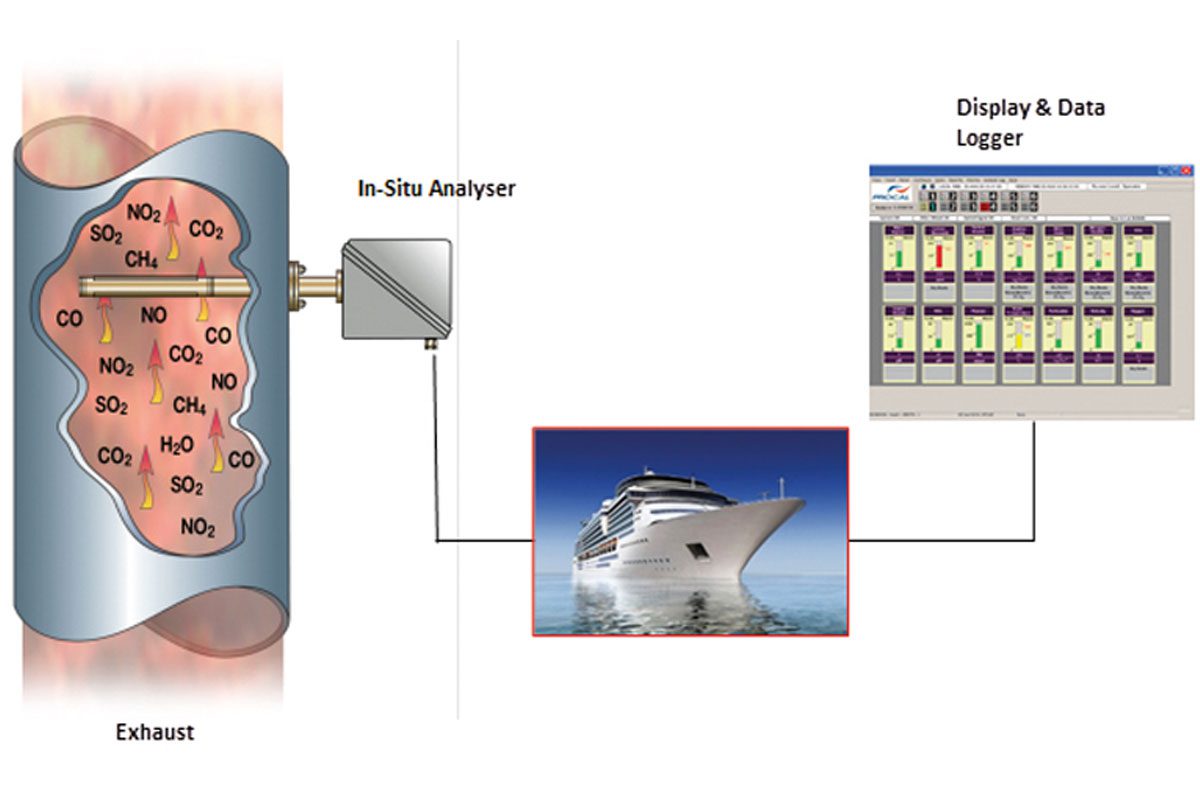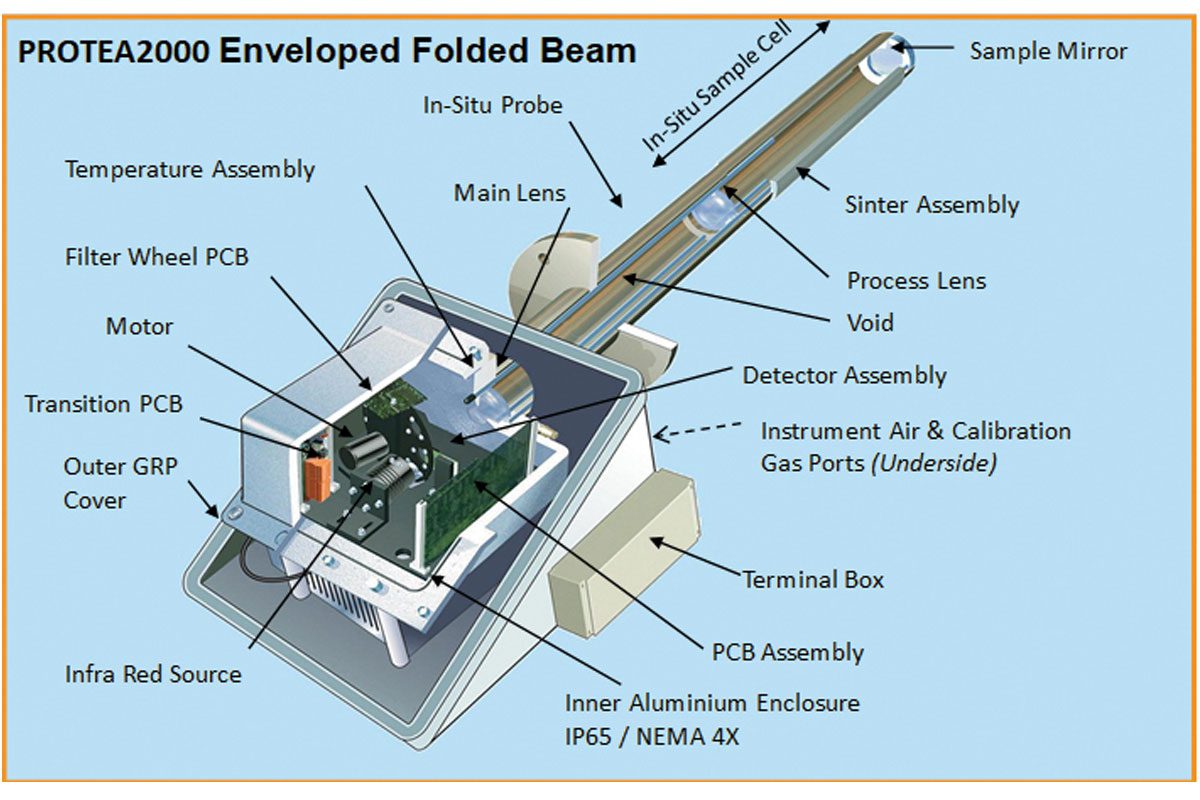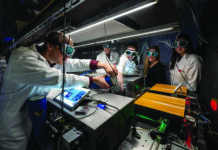Underpinning the effort to comply with marine emissions regulations is the monitoring of these exhaust gases, and instrumentation seems an indispensable support for marine operators under pressure to make good decisions with respect to things like fuel selection and the specification of scrubber systems. Envirotec asked continuous emissions monitoring expert Protea for insight into the topic.

Sulphur dioxide has been a focus of regulatory efforts in the shipping industry for a number of years, notably with the IMO 2020 regulations, introduced last year. The problem originally arose because of the heavy-duty fuel oil used in international shipping, which in 2012 contained more than 2700 times the sulphur content of road fuel. The IMO has cut the limit for sulphur content in fuel oil from 3.5% mass for mass (m/m) to 0.5% m/m, with an even stricter limit of 0.1% m/m in designated ‘emission control areas’ (ECAs).
There are currently four ECAs (in the Baltic Sea, the North Sea, North America, and the US Caribbean Sea). According to Protea’s Chris Daw, China has also introduced control areas on major estuaries where there are significant ship movements.
Factoring in fuel choice
Economic factors have driven the use of this low quality fuel, with there being a noticeable price tag attached to the use of the new emerging breed of low sulphur diesel and other marine fuels. Alternatively, shipping operators can choose to install Exhaust Gas Cleaning Systems (EGCS), also known as marine scrubbers.
The payback for installing an EGCS depends on the type of vessel, but can be lower than 18 months. Initially these systems were installed in vessels as a refit, but the focus has shifted and most now prioritise new-build installation. Over 5000 ships have operational EGCS, and the systems have been fitted to many classes of vessel including cruise ships, tankers, container ships, bulk carriers, ferries and specialist ships.
Of course, the whole issue can be sidestepped by running a ship on liquefied natural gas (LNG), but more recently a problem of “methane slip” has been identified, with the difficulties arising from unburnt methane. Some operators are using monitoring systems to keep track of the problem, and Protea recently supplied three such systems.
Protea is one of several companies supplying Continuous Monitoring Systems (CEMS) for the marine sector, which are used to monitor in accordance with the requirements of the IMO publication ARPOL Annex VI, and the need to report the SO2:CO2 ratio. Protea also provides a solution for monitoring the nitrogen oxide (NOx) and hydrocarbon (HC) concentrations.

Specifying measurement
The firm says its system is designed to operate with minimal maintenance, generally a priority with marine equipment of this kind. Daw explains that some of the advantages of Protea’s offering is in minimising the need to maintain pumps.
The Protea 2000 is designed to be used for in-stack monitoring, measuring the concentrations of the gases of interest within the engine exhaust duct (see figure 1, opposite). Unlike higher maintenance, extractive systems, the gases pass through sintered metal panels (a proprietary technology patented by the firm), which also sidesteps the need for filtering and sample conditioning.
Measurement of gas concentrations is via an infrared (IR) mechanism, whereby pulses of IR light, at several specific wavelengths, are fired into the exhaust system. A subsequent measurement of the absorption of energy at each wavelength provides an indicator of the gases present, and in this way up to six gases can be measured simultaneously.
A typical system comprises a stack-mounted analyser, an integral calibration module and a control unit. Other add-on options include an in-situ heater and a stand-alone analysis software package.
Looking to the horizon
For those interested in the marine and shipping sphere, there is an ever richer quantity of data and analytics available. One group, MarineTraffic, provides a lot of ship tracking and maritime intelligence on its website, at https://www.marinetraffic.com.
There are over 50k merchant ships trading internationally, and the global fleet is registered in over 150 countries. This website allows you to locate a vessel of interest and observe its current position, speed, course and destination.
Chris Daw suggests that In the future, environmental data could also be displayed in real time including things like emissions levels.







